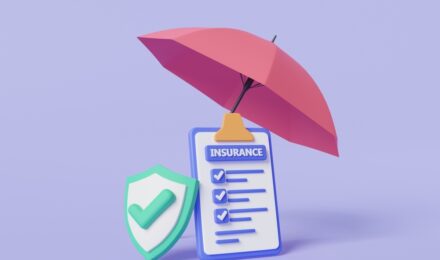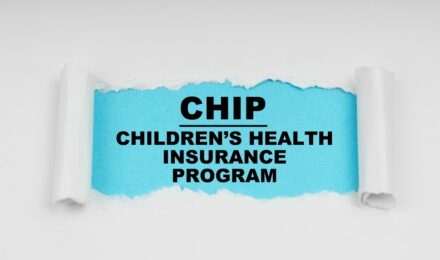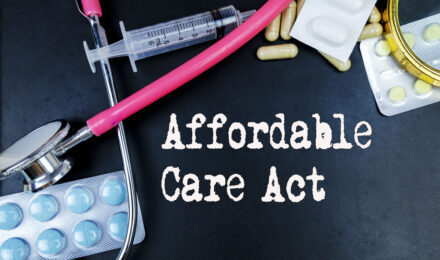Contents
Many families and individuals struggle financially, often without realizing they qualify for government programs designed to help. Billions of dollars in aid go unused every year, largely because people are unaware of their eligibility. By learning about these programs, you can access valuable support for housing, food, healthcare, and education.
Why People Miss Out on Benefits
Complex eligibility rules, lengthy applications, and lack of awareness prevent many households from applying for assistance. In fact, the U.S. Department of Agriculture reported that nearly one in five people eligible for food assistance never apply. Similar gaps exist across housing and healthcare programs.
Taking time to research programs now can make a significant financial difference in 2025.
Food Assistance Programs
Food insecurity remains a major challenge, yet federal and state programs exist to reduce the burden.
- Supplemental Nutrition Assistance Program (SNAP): Provides funds on an electronic benefits card to buy groceries. Even part-time workers or students may qualify under certain conditions.
- Women, Infants, and Children (WIC): Supports low-income pregnant women, new mothers, and young children with nutritious food and healthcare referrals.
- School Meal Programs: Many school districts offer free or reduced-price meals to children based on household income.
Tip: Benefits can be combined. For example, a family may qualify for both SNAP and school meal assistance.
Housing and Rent Relief
Rising rent and limited housing availability continue to stress families. Several programs offer relief:
- Housing Choice Voucher Program (Section 8): Provides rental assistance so households can afford safe housing in the private market. Waiting lists are long, but new funding cycles often open each year.
- Emergency Rental Assistance Programs (ERAP): Many states still provide rental help funded during the COVID-19 crisis. Some have extended support into 2025.
- Low-Income Home Energy Assistance Program (LIHEAP): Helps pay heating and cooling bills, preventing shutoffs during extreme weather.
Applying early improves your chances, especially for Section 8 vouchers, which are often oversubscribed.
Healthcare Support
Healthcare costs remain one of the biggest financial pressures in the U.S. Several programs reduce out-of-pocket spending:
- Medicaid Expansion: Available in most states, providing free or low-cost coverage to adults with limited income.
- Children’s Health Insurance Program (CHIP): Covers children in families that earn too much for Medicaid but still struggle with private insurance costs.
- Marketplace Subsidies: Under the Affordable Care Act, premium tax credits and cost-sharing reductions make health plans more affordable.
Pro tip: Even if you applied in past years and were denied, check again. Income thresholds and eligibility rules change annually.
Education and Job Training
Educational assistance programs can unlock better opportunities without leaving you in debt.
- Federal Pell Grants: Provide up to $7,395 in aid for low-income undergraduate students in 2025. Grants do not require repayment.
- Workforce Innovation and Opportunity Act (WIOA): Funds training programs for unemployed or underemployed workers seeking new skills.
- Public Service Loan Forgiveness (PSLF): Cancels remaining student loan balances after 10 years of qualifying public service employment and payments.
Local workforce boards and community colleges often administer WIOA programs, making them accessible in most regions.
Cash and Emergency Assistance
In addition to targeted aid, some households may qualify for direct cash support.
- Temporary Assistance for Needy Families (TANF): Offers short-term cash payments along with job training and childcare support.
- Supplemental Security Income (SSI): Provides cash benefits to low-income seniors and people with disabilities.
- Earned Income Tax Credit (EITC): Expands in 2025, offering significant tax refunds to low- and moderate-income workers.
Even small monthly amounts from TANF or SSI can help cover essentials when paired with other programs.
How to Check Your Eligibility
Navigating multiple programs may feel overwhelming, but free tools exist to simplify the process. The official Benefits.gov site includes a Benefits Finder tool. By answering questions about income, family size, and location, you receive a tailored list of possible programs.
State human service departments also maintain portals where residents can check eligibility and apply online.
Common Challenges in Accessing Aid
Even when qualified, applicants often face hurdles:
- Long wait times for application processing
- Requests for detailed documentation, such as pay stubs and utility bills
- Confusion about overlapping programs and income limits
- Limited availability of in-person support in rural areas
Patience and persistence are necessary. Submitting complete documentation and applying early in the year often improves outcomes.
Final Thoughts
Government assistance programs can be the difference between financial strain and stability. Yet too many eligible households leave money on the table. By exploring food, housing, healthcare, education, and cash aid programs, you may uncover resources that ease immediate burdens and build long-term security.
If you are unsure where to start, Benefits.gov and your state’s human services department are the best entry points. With the right information and timely applications, 2025 could be the year you access support you never knew was available.
References
- U.S. Department of Agriculture – Food and Nutrition Service
- U.S. Department of Housing and Urban Development
- Low Income Home Energy Assistance Program (LIHEAP)
- HealthCare.gov – Marketplace Coverage
- Federal Student Aid – Pell Grants
- Benefits.gov – Benefits Finder
Contents
Many families and individuals struggle financially, often without realizing they qualify for government programs designed to help. Billions of dollars in aid go unused every year, largely because people are unaware of their eligibility. By learning about these programs, you can access valuable support for housing, food, healthcare, and education.
Why People Miss Out on Benefits
Complex eligibility rules, lengthy applications, and lack of awareness prevent many households from applying for assistance. In fact, the U.S. Department of Agriculture reported that nearly one in five people eligible for food assistance never apply. Similar gaps exist across housing and healthcare programs.
Taking time to research programs now can make a significant financial difference in 2025.
Food Assistance Programs
Food insecurity remains a major challenge, yet federal and state programs exist to reduce the burden.
- Supplemental Nutrition Assistance Program (SNAP): Provides funds on an electronic benefits card to buy groceries. Even part-time workers or students may qualify under certain conditions.
- Women, Infants, and Children (WIC): Supports low-income pregnant women, new mothers, and young children with nutritious food and healthcare referrals.
- School Meal Programs: Many school districts offer free or reduced-price meals to children based on household income.
Tip: Benefits can be combined. For example, a family may qualify for both SNAP and school meal assistance.
Housing and Rent Relief
Rising rent and limited housing availability continue to stress families. Several programs offer relief:
- Housing Choice Voucher Program (Section 8): Provides rental assistance so households can afford safe housing in the private market. Waiting lists are long, but new funding cycles often open each year.
- Emergency Rental Assistance Programs (ERAP): Many states still provide rental help funded during the COVID-19 crisis. Some have extended support into 2025.
- Low-Income Home Energy Assistance Program (LIHEAP): Helps pay heating and cooling bills, preventing shutoffs during extreme weather.
Applying early improves your chances, especially for Section 8 vouchers, which are often oversubscribed.
Healthcare Support
Healthcare costs remain one of the biggest financial pressures in the U.S. Several programs reduce out-of-pocket spending:
- Medicaid Expansion: Available in most states, providing free or low-cost coverage to adults with limited income.
- Children’s Health Insurance Program (CHIP): Covers children in families that earn too much for Medicaid but still struggle with private insurance costs.
- Marketplace Subsidies: Under the Affordable Care Act, premium tax credits and cost-sharing reductions make health plans more affordable.
Pro tip: Even if you applied in past years and were denied, check again. Income thresholds and eligibility rules change annually.
Education and Job Training
Educational assistance programs can unlock better opportunities without leaving you in debt.
- Federal Pell Grants: Provide up to $7,395 in aid for low-income undergraduate students in 2025. Grants do not require repayment.
- Workforce Innovation and Opportunity Act (WIOA): Funds training programs for unemployed or underemployed workers seeking new skills.
- Public Service Loan Forgiveness (PSLF): Cancels remaining student loan balances after 10 years of qualifying public service employment and payments.
Local workforce boards and community colleges often administer WIOA programs, making them accessible in most regions.
Cash and Emergency Assistance
In addition to targeted aid, some households may qualify for direct cash support.
- Temporary Assistance for Needy Families (TANF): Offers short-term cash payments along with job training and childcare support.
- Supplemental Security Income (SSI): Provides cash benefits to low-income seniors and people with disabilities.
- Earned Income Tax Credit (EITC): Expands in 2025, offering significant tax refunds to low- and moderate-income workers.
Even small monthly amounts from TANF or SSI can help cover essentials when paired with other programs.
How to Check Your Eligibility
Navigating multiple programs may feel overwhelming, but free tools exist to simplify the process. The official Benefits.gov site includes a Benefits Finder tool. By answering questions about income, family size, and location, you receive a tailored list of possible programs.
State human service departments also maintain portals where residents can check eligibility and apply online.
Common Challenges in Accessing Aid
Even when qualified, applicants often face hurdles:
- Long wait times for application processing
- Requests for detailed documentation, such as pay stubs and utility bills
- Confusion about overlapping programs and income limits
- Limited availability of in-person support in rural areas
Patience and persistence are necessary. Submitting complete documentation and applying early in the year often improves outcomes.
Final Thoughts
Government assistance programs can be the difference between financial strain and stability. Yet too many eligible households leave money on the table. By exploring food, housing, healthcare, education, and cash aid programs, you may uncover resources that ease immediate burdens and build long-term security.
If you are unsure where to start, Benefits.gov and your state’s human services department are the best entry points. With the right information and timely applications, 2025 could be the year you access support you never knew was available.






